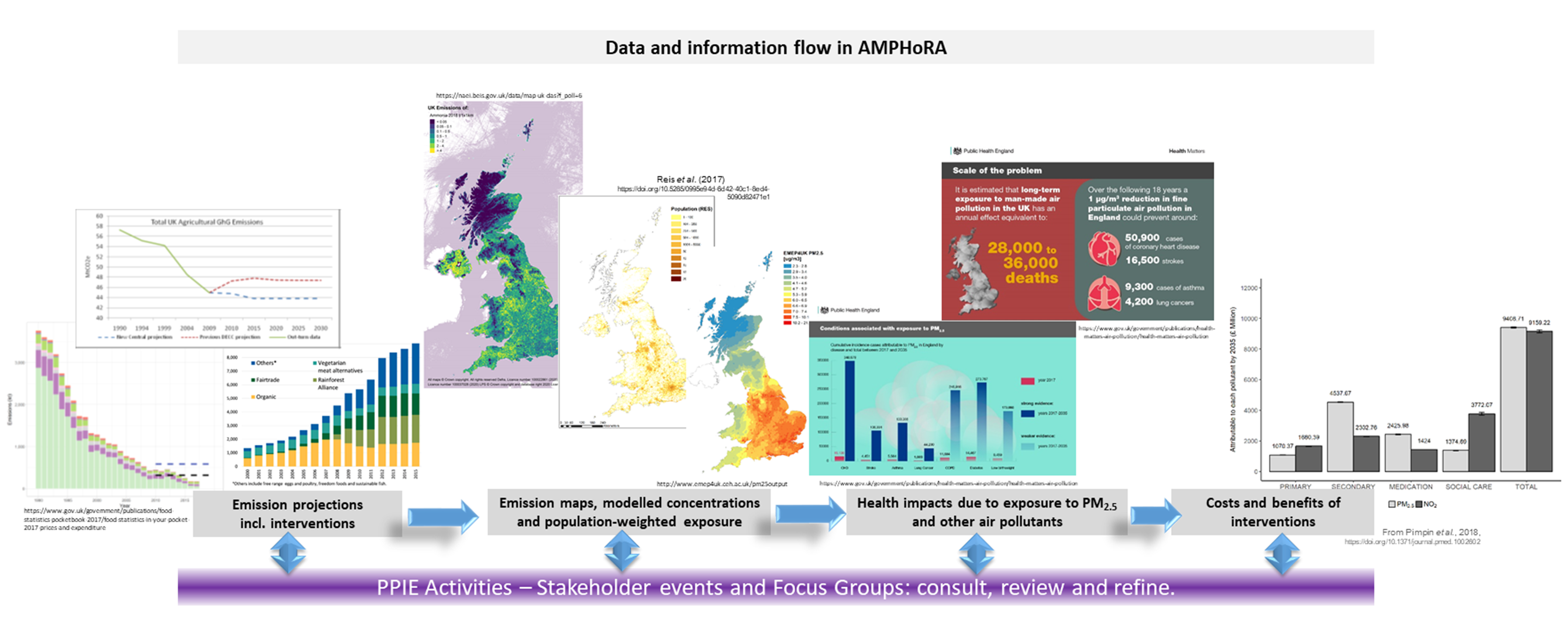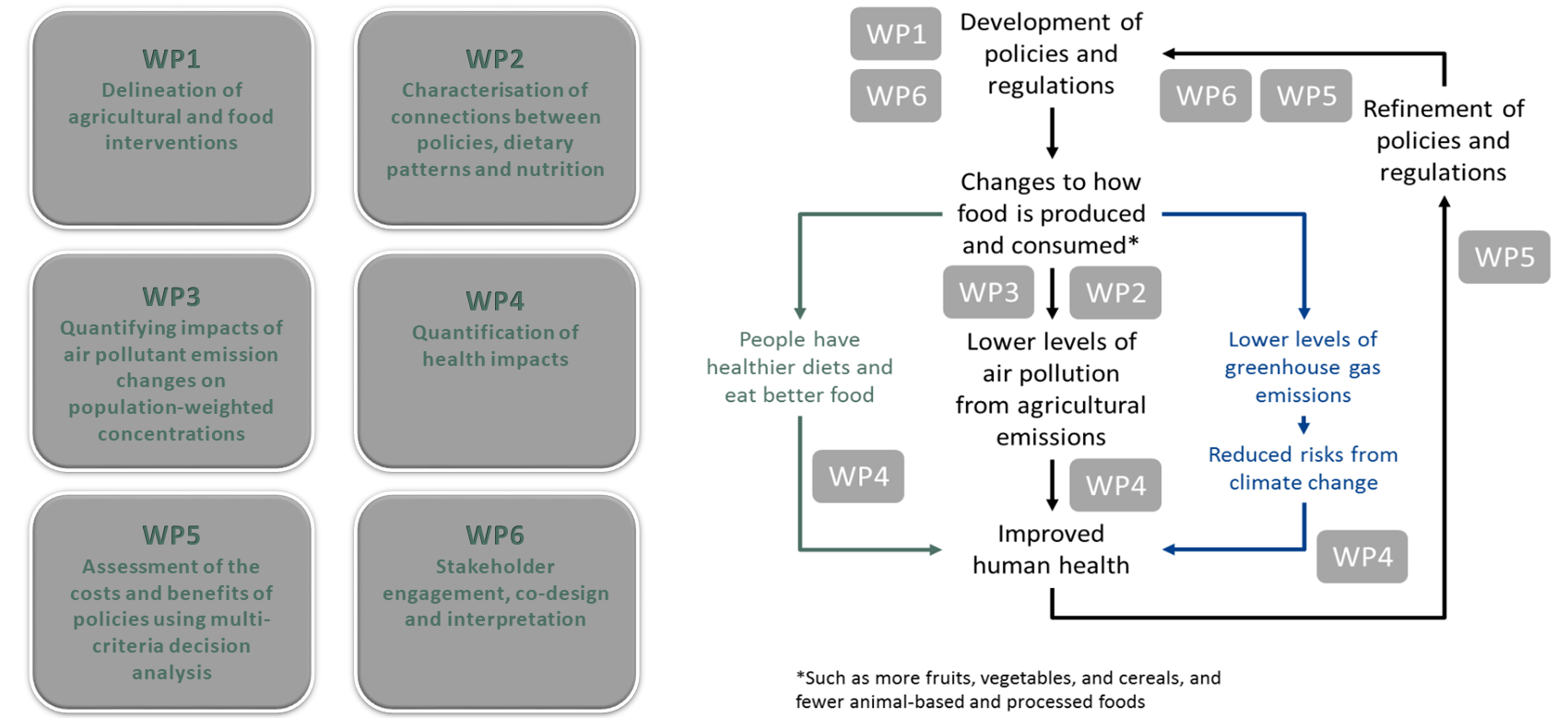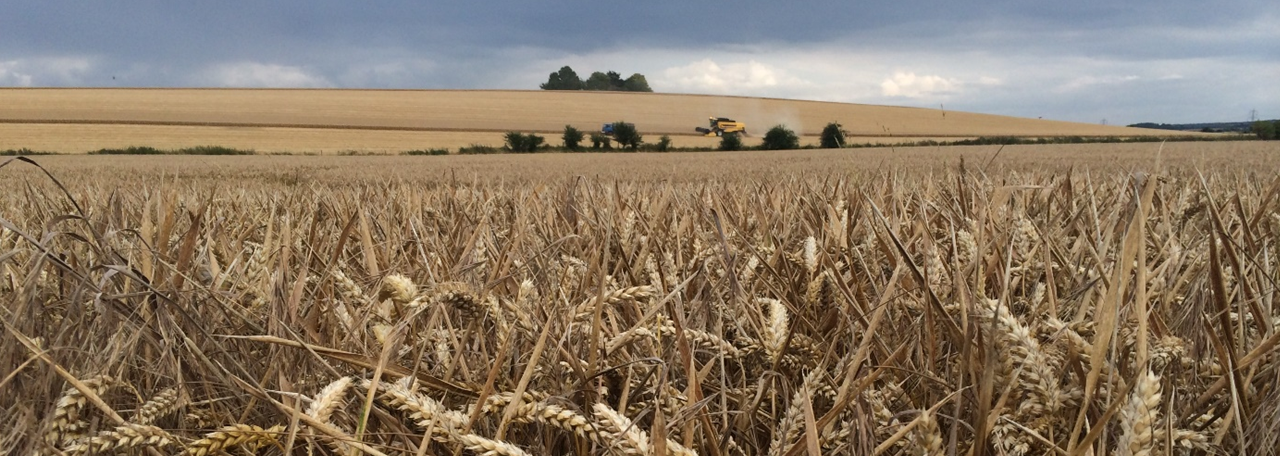Our key research question is:
What should we do to reduce the health impacts of air pollution from agriculture?
with a specific focus on how changes in agricultural production and patterns of food consumption can influence agricultural emissions, their negative health effects and health inequalities.
Key topics include:
- The contribution of agricultural emissions of ammonia and other air pollutants to the exposure of the UK's population to harmful levels of fine particulate matter.
- Effectiveness of existing and planned policy interventions to mitigate emissions and reduce exposure.
- Public health benefits in terms of cost savings and improving the well-being of vulnerable population groups, patients and the general public.
- Impacts of interventions in terms of socio-economic and environmental aspects, including co-benefits and unintended consequences, with a focus on regional and distributional effects.
- Potential benefits of emission and dietary changes for greenhouse gas emissions, biodiversity and the prevention of non-contagious diseases.
Background and rationale:
Agricultural emissions, in particular ammonia, contribute to formation of secondary inorganic aerosols (SIA), exposing the population to ammonium nitrate/sulphate in fine particulate matter (PM2.5). This affects widespread areas and populations, as SIA can be transported over mid and long ranges, taking PM2.5 far from emission hotspots. Emissions come from a variety of sources and are also affected by meteorological conditions, making them hard to address using policy interventions, as local changes may not affect local concentrations. At the same time, human diets and the relationships between food production and both human and environmental health are subject to extensive research.
Recent research has highlighted the need for substantial changes in human diets to safeguard food security, nutrition, human health and well-being within planetary boundaries. Both the implementation of technical and management interventions in agricultural production systems and changes in human diets will affect emissions of ammonia and other air pollutants. Such changes will vary between regions and agricultural sub-sectors. Full costs and benefits of policy interventions need to be modelled in advance , to ensure that interventions are designed for maximum positive environmental and human health effects, without negative impacts on UK food security and healthy nutrition. With the exit from the EU, UK environmental, agricultural and health policy reviews present a unique opportunity for a consistent and integrated approach to maximise benefits for public health, the environment and the economy. Reducing exposure to harmful levels of air pollution and thus adverse public health effects, as well as improving diets and nutrition could achieve whole health system cost reductions, benefitting patients and primary/secondary health care provisions. Our research will realise a step change in how we conduct integrated assessments of potential policy interventions.

Specific objectives:
- To convene a multi-stakeholder group, comprising government departments/agencies, food and agriculture industry experts, the public, 3rd sector organizations and academics, to explore existing and potential future policies with potential to reduce emissions of air pollutants and GHGs through changes to
- agricultural technology and land-use management, and
- factors influencing dietary patterns
- To quantify the impact in terms of key nutritional constituents and fulfilment of nutritional needs of interventions aimed at altering patterns of food consumption and UK production that both help to reduce air pollutant emissions and improve diets for health and sustainability
- To quantify the impact of such policies on air pollutants, GHG emissions, and on population-weighted ambient concentrations of PM, NO2, and ozone, now and in future, under policy scenarios defined in Objective 1.
- To develop and apply models of health impact capturing the mortality and morbidity benefits/harms of changes in air quality of food/agriculture interventions (including both existing and potential future policies), and of the associated dietary changes and environmental impacts where relevant
- To compare policies over time horizons up to 2050 using a multi-criteria assessment framework with assessment criteria developed with the multi-stakeholder group (and to include the fulfilment of AP goals, health, health differentials, GHG emissions targets, economic costs)
- To assess the implications of these analyses for policy development and implementation, patients and the wider public, taking account of real-world constraints and opportunities, including with the aid of an iterative cycle of stakeholder engagements.
Project structure:

